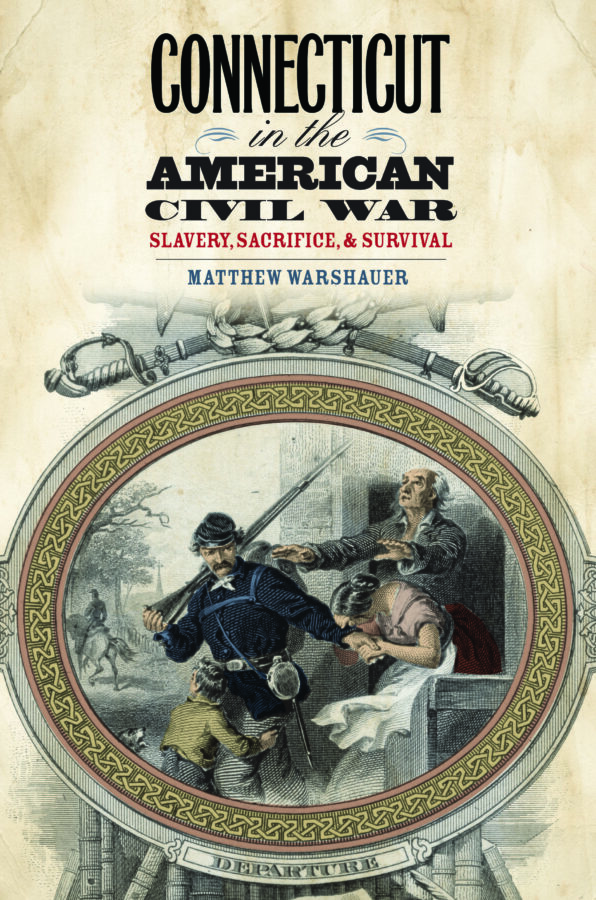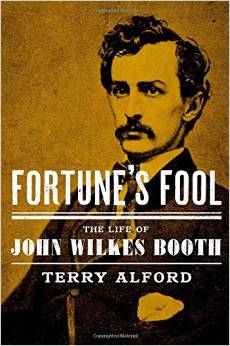Connecticut in the American Civil War: Slavery, Sacrifice, and Survival by Matthew Warshauer. Middleton: Wesleyan University Press, 2011. Cloth, ISBN 978-0-8195-7138-0. $29.95.
 The Civil War Centennial saw the publication of histories of state participation in the Civil War. Now, with the approach of the sesquicentennial, it appears as if a new batch of histories building upon the last 50 years of scholarship is on the way. Matthew Warshauer’s Connecticut in the American Civil War: Slavery, Sacrifice, and Survival serves as a model of what a state-level survey of the Civil War can achieve. More than a synthesis, his book attains a potent combination of description and analysis.
The Civil War Centennial saw the publication of histories of state participation in the Civil War. Now, with the approach of the sesquicentennial, it appears as if a new batch of histories building upon the last 50 years of scholarship is on the way. Matthew Warshauer’s Connecticut in the American Civil War: Slavery, Sacrifice, and Survival serves as a model of what a state-level survey of the Civil War can achieve. More than a synthesis, his book attains a potent combination of description and analysis.
Warshauer begins with a chapter describing Connecticut’s attitudes toward slavery and African Americans before the Civil War. Although Connecticut harbored some abolitionist agitation, its residents typically eschewed African Americans and saw little problem with the peculiar institution. White residents mobbed African-American schools and churches throughout the 1830s and 1840s; it took the state until 1848 to abolish slavery within its borders. Only with the threat of slave expansion and the rise of the Republican Party did Connecticut come to oppose slavery. Yet as Warshauer amply documents, this opposition entailed very little concern for African Americans themselves. Even then, this opposition was by no means uniform. Secession, for most in Connecticut, betokened the true strength of the so-called “slave power” conspiracy that sought to destroy republican government. When the people of Connecticut rallied around the flag following secession, they did so to preserve the Union and destroy this slave power. Even then, the Democratic Party managed to forge a powerful loyal opposition during the war.
Connecticut’s citizens rallied around the flag, indeed. About 10 percent of Connecticut’s population served in the Civil War. Among white residents, 47 percent of men between 15 and 50 eventually served; among African-American residents, the percentage was a staggering 78 percent (5). Warshauer summarizes the actions of Connecticut’s regiments on the battlefield, but more importantly, he connects their battlefield experiences to changes at home. Through letters to their local papers, soldiers engaged in the political debates about the meaning of the war that took place in Connecticut. Most of Connecticut’s soldiers, reflecting the antebellum culture of the state, begrudgingly accepted the evolution of emancipation as a war goal. Others within Connecticut, primarily merchants and manufacturers, saw the war as an opportunity for increased business. Rather than relying on secondary sources alone, Warshauer richly layers his discussion of the war through comprehensive use of local papers, soldiers’ testimony, and the public pronouncements of politicians.
Connecticut in the Civil War concludes with a chapter on the memory of the war within Connecticut. Nearly as soon as the guns had fallen silent, political conflict erupted in Connecticut over the question of whether or not to grant voting rights to African Americans. Although Republicans passed an amendment granting voting rights to blacks through the House and State Senate, voters defeated it when it was placed before the public as a referendum (184-86). The voters of Connecticut, despite the four long years of war, saw the war as something other than a freedom struggle for African Americans.
Warshauer also chronicles the town monuments erected in the immediate aftermath of the war to those who had been lost. He finds that most of these monuments “focused on the idea of sacrifice, patriotism, and loyalty to the Union or the flag” (196). Beyond the memory of the veterans, Warshauer carries his story forward even through the Centennial, including a brief summary of the state commission to commemorate the Civil War. Unsurprisingly, he finds that the state commission, as with the national commission, “avoided addressing the war’s causes and the racial issues that grew out of them” (216).
Warshauer has crafted a history that succeeds marvelously at conveying information while adroitly putting forth an argument. For Connecticut, the Civil War meant conflict both internal and external. While there were radicals, both Republican and Democratic, within Connecticut, most people in the state saw the Civil War as war for Union.
